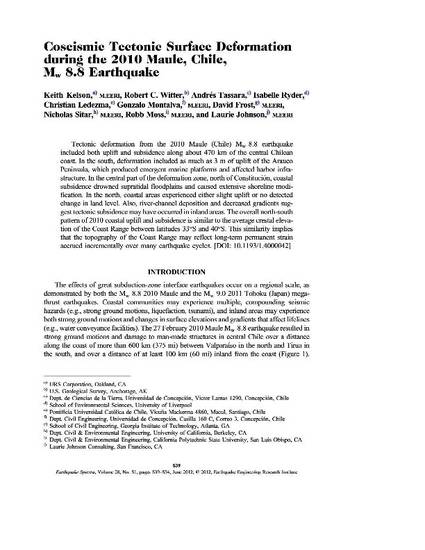
Tectonic deformation from the 2010 Maule (Chile) Mw 8.8 earthquake included both uplift and subsidence along about 470 km of the central Chilean coast. In the south, deformation included as much as 3 m of uplift of the Arauco Peninsula, which produced emergent marine platforms and affected harbor infrastructure. In the central part of the deformation zone, north of Constitución, coastal subsidence drowned supratidal floodplains and caused extensive shoreline modification. In the north, coastal areas experienced either slight uplift or no detected change in land level. Also, river-channel deposition and decreased gradients suggest tectonic subsidence may have occurred in inland areas. The overall north-south pattern of 2010 coastal uplift and subsidence is similar to the average crestal elevation of the Coast Range between latitudes 33°S and 40°S. This similarity implies that the topography of the Coast Range may reflect long-term permanent strain accrued incrementally over many earthquake cycles.
Available at: http://works.bepress.com/rmoss/39/
